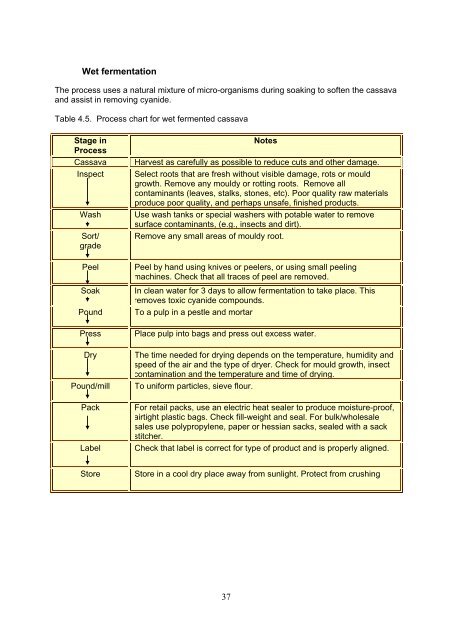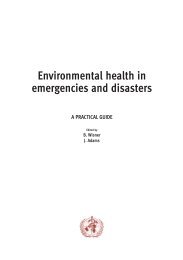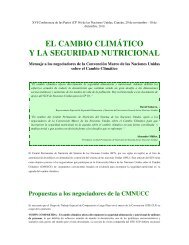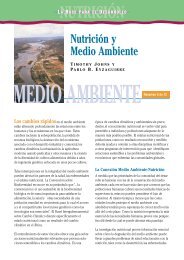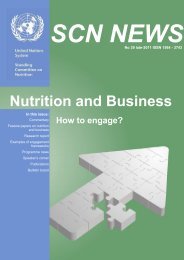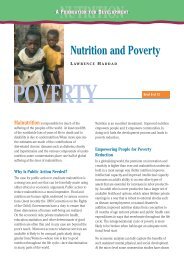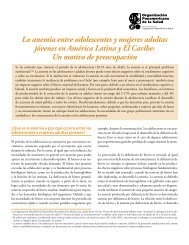Glossary and Abbreviations - Unido
Glossary and Abbreviations - Unido
Glossary and Abbreviations - Unido
You also want an ePaper? Increase the reach of your titles
YUMPU automatically turns print PDFs into web optimized ePapers that Google loves.
Wet fermentation<br />
The process uses a natural mixture of micro-organisms during soaking to soften the cassava<br />
<strong>and</strong> assist in removing cyanide.<br />
Table 4.5. Process chart for wet fermented cassava<br />
Stage in<br />
Process<br />
Cassava<br />
Inspect<br />
Wash<br />
Sort/<br />
grade<br />
Peel<br />
Soak<br />
Pound<br />
Press<br />
Dry<br />
Pound/mill<br />
Pack<br />
Label<br />
Notes<br />
Harvest as carefully as possible to reduce cuts <strong>and</strong> other damage.<br />
Select roots that are fresh without visible damage, rots or mould<br />
growth. Remove any mouldy or rotting roots. Remove all<br />
contaminants (leaves, stalks, stones, etc). Poor quality raw materials<br />
produce poor quality, <strong>and</strong> perhaps unsafe, finished products.<br />
Use wash tanks or special washers with potable water to remove<br />
surface contaminants, (e.g., insects <strong>and</strong> dirt).<br />
Remove any small areas of mouldy root.<br />
Peel by h<strong>and</strong> using knives or peelers, or using small peeling<br />
machines. Check that all traces of peel are removed.<br />
In clean water for 3 days to allow fermentation to take place. This<br />
removes toxic cyanide compounds.<br />
To a pulp in a pestle <strong>and</strong> mortar<br />
Place pulp into bags <strong>and</strong> press out excess water.<br />
The time needed for drying depends on the temperature, humidity <strong>and</strong><br />
speed of the air <strong>and</strong> the type of dryer. Check for mould growth, insect<br />
contamination <strong>and</strong> the temperature <strong>and</strong> time of drying.<br />
To uniform particles, sieve flour.<br />
For retail packs, use an electric heat sealer to produce moisture-proof,<br />
airtight plastic bags. Check fill-weight <strong>and</strong> seal. For bulk/wholesale<br />
sales use polypropylene, paper or hessian sacks, sealed with a sack<br />
stitcher.<br />
Check that label is correct for type of product <strong>and</strong> is properly aligned.<br />
Store<br />
Store in a cool dry place away from sunlight. Protect from crushing<br />
37


